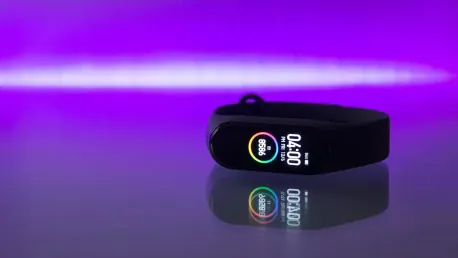Fitness trackers have evolved significantly over the years, becoming more than just step counters. They now offer a wide range of features that cater to various needs and preferences, from basic activity tracking to comprehensive health monitoring. Choosing the right fitness tracker can be overwhelming, given the numerous options available. This article reviews the top fitness trackers on the market, highlighting their features, pros, and cons to help readers make an informed decision.
Comprehensive Fitness Tracking Options
Fitness trackers come in a variety of forms, from functional bands to sophisticated smart rings. For instance, the Whoop 4.0 offers simplicity and comfort without a display screen, focusing on basic tracking needs. On the other hand, the Oura Ring 4 provides a compact, ring-based solution that tracks comprehensive health metrics, including sleep patterns and heart rate variability.
The diversity in the market ensures that there is a fitness tracker tailored to everyone’s specific needs. Whether it’s a device that simply counts steps or one that provides detailed health insights, consumers will find a suitable option. This vast range means fitness enthusiasts can match their trackers precisely to their unique requirements, ensuring optimal fitness and health benefits.
Design and Usability
The design and usability of a fitness tracker significantly influence its overall appeal. Sleek designs like those of the Apple Watch Ultra 2 and the Google Pixel Watch 3 are particularly praised for their aesthetic value and user-friendly touchscreen functionality. The convenience of easily navigating through features and menus enhances the user experience, making these models stand out.
User comfort remains an essential aspect when selecting a fitness tracker. The Whoop 4.0 shines through for its adjustable strap and simple design, enabling all-day wear without causing discomfort. This ensures users can continuously monitor their activity and health metrics without the device becoming a nuisance. Effective design paired with practical usability is paramount for fitness trackers to be integrated seamlessly into daily routines.
Battery Life and Charging
Battery performance is a critical factor when considering a fitness tracker. For example, the Garmin Fēnix 8 offers impressive battery life, especially in its solar-powered variant, making it suitable for extended outdoor activities where frequent charging isn’t feasible. Conversely, devices like the Google Pixel Watch 3 require more frequent charging, which can be a drawback for some users.
Understanding how battery life varies with usage is vital. Certain features, like GPS, can significantly reduce battery longevity. Potential buyers need to be aware of these variances and select a tracker that aligns with their lifestyle and intended use. A reliable battery life ensures continuous tracking, which is essential for maintaining an accurate record of one’s fitness journey.
Advanced Metrics and Special Features
Modern fitness trackers are equipped to measure a range of advanced metrics. Devices like the Oura Ring 4 track heart rate variability (HRV), blood oxygen levels, and even stress levels, providing a holistic view of an individual’s health. These detailed insights enable users to make informed decisions regarding their health and wellness routines.
Special features add significant value to fitness trackers, distinguishing them from basic models. For instance, the Apple Watch Ultra 2 includes an emergency siren, while the Oura Ring 4 boasts illness detection capabilities. These features enhance the utility of fitness trackers, making them invaluable tools not just for fitness tracking but for overall health monitoring as well.
Compatibility and Connectivity
Seamless operation of fitness trackers relies heavily on their compatibility with smartphones. Take, for example, the Google Pixel Watch 3, which is not compatible with iPhones—a significant limitation for users who own Apple smartphones. Ensuring that the chosen fitness tracker works well with existing devices is crucial for maximizing its potential.
Compatibility ensures that users can utilize the full array of features offered by their fitness trackers. This includes data synchronization and access to health apps. A fitness tracker that integrates well with a user’s smartphone and other gadgets provides a more comprehensive and efficient fitness monitoring experience.
Specialized Uses
Certain fitness trackers are developed with specific activities in mind. The Garmin Instinct 3 AMOLED, for instance, is known for its durability, making it particularly suitable for outdoor adventures. Similarly, the Suunto Race S is designed for runners, offering race pacing features that provide specialized support.
Selecting a fitness tracker that complements particular activities can significantly enhance the user experience. Detailed and activity-specific insights ensure that users can optimize their performance in their chosen domain, making these specialized trackers an invaluable tool for dedicated athletes and outdoor enthusiasts alike.
Pricing and Value
Budget is often a key consideration when choosing a fitness tracker. Devices like the Google Pixel Watch 3 offer extensive wellness metrics at a more affordable price, making them an excellent choice for those conscious of their budget. They provide essential tracking functions without the need for significant financial investment.
Conversely, higher-end devices like the Apple Watch Ultra 2 offer premium features and durability, which justify their higher price points. Assessing the value each tracker provides relative to its cost is crucial in making an informed decision. Understanding what features are prioritized ensures that users find the best fit for their needs and budget.
Continuous Innovation
The fitness tracker industry is marked by continuous innovation. New models regularly bring enhanced features and improved accuracy, elevating the overall user experience. Companies strive to stay ahead by incorporating the latest technology and ensuring their devices meet evolving consumer needs.
Keeping an eye on recent releases and updates is beneficial for staying informed. It allows potential buyers to choose fitness trackers that cater to their current requirements while offering room for their fitness journeys to evolve. The dynamic nature of the industry means users can always find new solutions that streamline their health and fitness tracking.
Practical Experience and Expert Opinions
Expert reviews and practical user experiences provide valuable insights into the performance and reliability of fitness trackers. They highlight strengths and potential weaknesses, helping prospective buyers make informed choices. Real-life experiences often uncover practical considerations that technical specifications alone might not reveal.
Consulting expert opinions and user reviews can paint a clearer picture of what to expect from different fitness trackers. This ensures that expectations align with the practical realities of using these devices. Making a decision informed by comprehensive reviews and real-world feedback can lead to greater satisfaction and effectiveness.
Holistic Health Monitoring
Modern fitness trackers go beyond traditional fitness metrics, embracing a holistic approach to health monitoring. Tracking variables such as stress levels, sleep patterns, and overall activity levels provides users with comprehensive health insights. This broader scope allows for a well-rounded understanding of one’s health and fosters proactive health management.
Choosing a fitness tracker that offers detailed health monitoring helps maintain a balanced lifestyle. Users can identify trends, anticipate potential health issues, and make lifestyle changes based on real-time data. Such comprehensive monitoring contributes significantly to achieving overall wellness goals.
Simplicity for Beginners
For those new to fitness tracking, simplicity and ease of use are paramount. The Casio G-Shock Move, for example, offers basic features and a straightforward interface, making it an excellent starter tracker. A device with user-friendly controls helps beginners get accustomed to tracking their fitness without being overwhelmed.
Opting for a simple, intuitive fitness tracker facilitates a smoother transition into regular fitness monitoring. As users become more comfortable with the technology, they can gradually explore more advanced features. A beginner-friendly tracker ensures that new users remain encouraged and consistent in their fitness journey.
Robustness for Outdoor Enthusiasts
Outdoor and adventure enthusiasts require fitness trackers that can withstand harsh conditions. Devices like the Garmin Instinct 3 AMOLED offer rugged builds, long battery life, and features tailored for extreme environments. These trackers are built to endure the rigors of outdoor activities, ensuring reliable performance in diverse and challenging conditions.
Rugged fitness trackers provide essential insights while enduring the impact of outdoor adventures. They are indispensable for outdoor enthusiasts, ensuring continuous tracking and support even in harsh environments. These robust devices highlight the importance of durability and reliability for those who pursue fitness beyond the confines of a gym.
Concluding Insights and Future Considerations
Fitness trackers have come a long way from being simple step counters. Today’s fitness trackers are equipped with a plethora of features designed to cater to a diverse range of needs. While basic models still offer essential activity tracking functions like step counting and calorie burning, more advanced trackers provide comprehensive health monitoring options. These can include heart rate monitoring, sleep pattern tracking, GPS capabilities, and even stress level measurements.
Given the myriad of choices available in the market, selecting the right fitness tracker can feel daunting. To make this decision easier, this article reviews some of the top fitness trackers available. We dive into their features, advantages, and disadvantages, helping readers understand which model might best suit their individual lifestyle and fitness goals. Whether you’re a casual walker looking to track your daily activity or a serious athlete needing in-depth performance data, we’ve got you covered with our comprehensive guide. We’ve evaluated battery life, user-friendliness, design, and other crucial aspects to provide a holistic view, ensuring you can make an informed decision.









